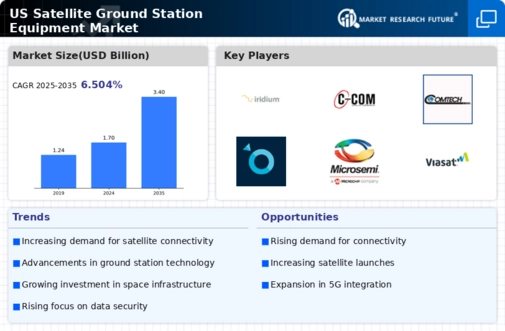US Satellite Ground Station equipment Market Summary
The United States Satellite Ground Station Equipment market is poised for substantial growth, projected to reach 3.4 USD billion by 2035.
Key Market Trends & Highlights
US Satellite Ground Station Equipment Key Trends and Highlights
- The market valuation is estimated at 1.7 USD billion in 2024, indicating a robust starting point for growth.
- A compound annual growth rate (CAGR) of 6.5 percent is anticipated from 2025 to 2035, reflecting increasing demand.
- By 2035, the market is expected to double in size, reaching 3.4 USD billion, driven by technological advancements.
- Growing adoption of satellite communication technology due to the increasing need for reliable data transmission is a major market driver.
Market Size & Forecast
| 2024 Market Size | 1.7 (USD Billion) |
| 2035 Market Size | 3.4 (USD Billion) |
| CAGR (2025-2035) | 6.5% |
Major Players
Iridium Communications, Raytheon Technologies, CCOM Satellite Systems, Comtech Telecommunications, Satellogic, Gilat Satellite Networks, L3Harris Technologies, Microsemi, Viasat, SES, Planet Labs, Northrop Grumman, Hughes Network Systems



















